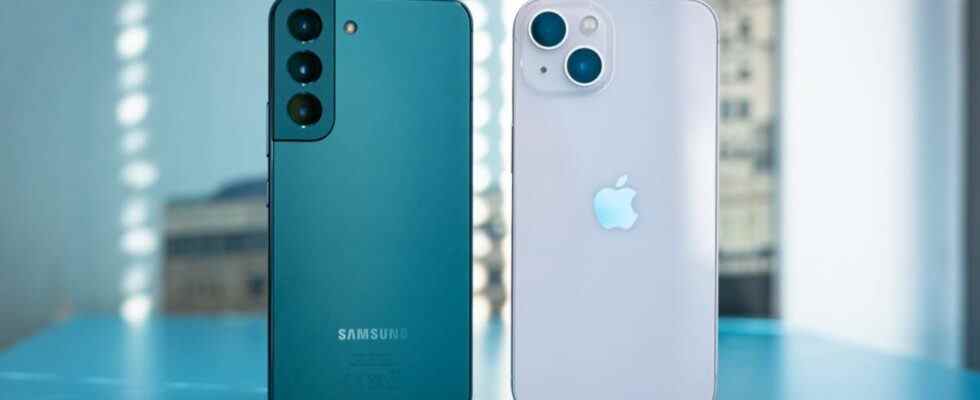The prices of technological devices sold in our country continue to rise day by day. From phones to tablets, from smart watches to robot vacuums, we use many products to help us in every aspect of our daily life. While buying these products, the same question appears in our minds. Does it deserve this price? To understand this, we can look at how much profit technological devices provide to their manufacturers.
Apple vs Samsung: The cost of smartphones!
When purchasing technological devices, everyone has thought before, how much of the price paid for these products is profit. But it is quite difficult to predict. Because there can be a gap between the profits they provide to the manufacturers of two devices that are very similar to each other.
Of course, all companies want to do business with high profits. However, thanks to the competition, they apply different price policies either to keep the company alive or to earn more. For this reason, some aim to win from the version, while others prefer high profitability per device.
The best example of this situation is Xiaomi, which sold the most smartphones last year. The Chinese technology firm says that it earns from the release by determining the selling price of the phones with a maximum profit rate of 5 percent. This number may be quite normal or meaningless to you. However, when you see the profitability ratios of other companies, the situation will be more understandable.
| Smart phone | Production cost | launch price | of the price tag how much profit? |
|---|---|---|---|
| iPhone 13 Pro 128GB | $570 | $999 | 42.9 percent |
| Apple iPhone 12 Pro 128GB | $406 | $999 | 59.36 percent |
| Apple iPhone 12 64GB | $373 | $829 | 55.01 percent |
| Apple iPhone XS Max 256GB | $443 | $1,249 | 64.53 percent |
| Apple iPhone X 64GB | $389.50 | $999 | 61.01 percent |
| Apple iPhone 8 Plus 64GB | $295.44 | $799 | 63.02 percent |
| Apple iPhone 8 64GB | $254.87 | $699 | 63.54 percent |
| Apple iPhone 7 32GB | $224.80 | $649 | 65.4 percent |
| Apple iPhone 6S Plus 16GB | $236 | $749 | 68.5% |
| Apple iPhone 6S 16GB | $211.50 | $649 | 67.4 percent |
| Apple iPhone 6 16GB | $200.10 | $649 | 70.9 percent |
| Apple iPhone 5S 16GB | $199 | $849 | 74 percent |
| Google Pixel XL 32GB | $285.75 | $769 | 62.84 percent |
| Samsung Galaxy Note 3 32GB | $232.50 | $699 | 69.6 percent |
| Samsung Galaxy Note 8 | $369 | $950 | 61.2 percent |
| Samsung Galaxy S6 32GB | $275.50 | $699.99 | 60.6 percent |
| Samsung Galaxy S7 32GB | $255 | $599 | 57.4 percent |
| Samsung Galaxy S8+ Plus | $343 | $850 | 59.6 percent |
| Samsung Galaxy S9 Plus 64GB | $379 | $839 | 54.8 percent |
| Samsung Galaxy S10 Plus 128GB | $420 | $999 | 57.9 percent |
| Samsung Galaxy S20 Ultra 256GB/12GB | $528.50 | $1,350 | 60.9 percent |
| Samsung Galaxy S21 Ultra 128GB | $533 | $1,199 | 55.5 percent |
| Samsung Galaxy S21 128GB | $399.50 | $799 | 50 percent |
| Samsung Galaxy S21 256GB | $414 | $849 | 51.2 percent |
Since the profit rates you see in our list above are calculated over the US sales prices, these rates can drop to 30 percent depending on countries and dates. However, what is certain is that brands make a huge profit on the phones they sell. Moreover, there is also the spare parts and service side of the business.
Technological devices are not just smartphones, of course. There are dozens or even hundreds of products such as smart watches, headphones, tablets, computers, televisions, scooters, robot vacuums and more. The profit rates of these other technological devices we mentioned are not that high. So much so that even Samsung and Apple, which make a profit of 50-70 percent in smartphones, can drop to 20 percent in other products they sell.
What do you think about Xiaomi, which says that it sells smartphones with a maximum profit of 5 percent? While this rate rises to 10 percent in ecosystem products, there are much higher profit rates in computers, televisions and white goods. In short, if we are going to buy a technological device, we should not think that the high price always represents the quality of the product.
What do you think about this subject? Don’t forget to share your views with us in the comments!

